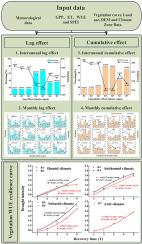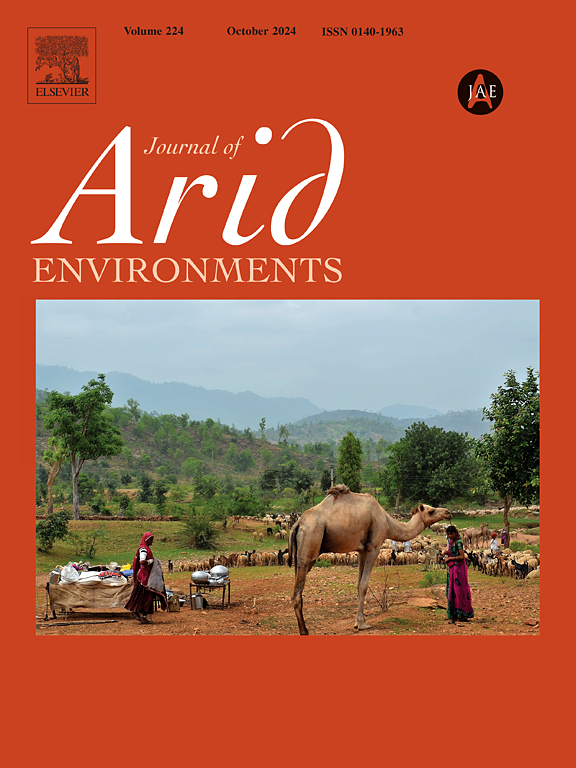The response of water-carbon coupling to drought stress in terrestrial ecosystems in China
IF 2.5
3区 环境科学与生态学
Q2 ECOLOGY
引用次数: 0
Abstract
Extreme drought events have severely affected vegetation growth, but the responses of the water-carbon coupling process of vegetation in various climate zones in China to drought remain unclear. Therefore, based on WUE (Water Use Efficiency), we analyzed the responses and recovery capabilities of vegetation water-carbon coupling in various climate zones to drought stress. The results showed that 1) In terms of the drought lag time of the two, the warm and humid climate zone responds to drought events more slowly than the arid and semi-arid climate zone. On the optimal lag time, vegetation WUE and SPEI (Standardized Precipitation Evapotranspiration Index) were generally negatively correlated across climate zones. 2) The cumulative water deficit in the previous period had a medium-term cumulative effect on the vegetation WUE process in arid and semi-arid climatic zones, and a short-term cumulative effect on the WUE process in warm-humid climatic zones. 3) The resilience curve which showed that the vegetation WUE of the semi-humid and alpine arid regions had a stronger resilience to drought stress with strong recovery ability. These findings reveal the mechanism of vegetation water-carbon coupling process in response to drought, and provide an important basis for in-depth study of vegetation memory effects and adaptation strategies.

中国陆地生态系统水碳耦合对干旱胁迫的响应
极端干旱事件严重影响了植被的生长,但中国各气候带植被水碳耦合过程对干旱的响应尚不清楚。基于WUE (Water Use Efficiency),分析了不同气候区植被水碳耦合对干旱胁迫的响应及恢复能力。结果表明:1)从干旱滞后时间上看,温暖湿润气候区对干旱事件的响应要慢于干旱半干旱气候区;在最佳滞后时间上,各气候带植被WUE与标准化降水蒸散发指数(SPEI)总体呈负相关。2)前期累积水分亏缺对干旱半干旱气候带植被水分利用效率过程具有中期累积效应,对暖湿气候带植被水分利用效率过程具有短期累积效应。3)恢复曲线表明,半湿润和高寒干旱区植被WUE对干旱胁迫具有较强的恢复能力。这些发现揭示了干旱条件下植被水碳耦合过程的机制,为深入研究植被记忆效应和适应策略提供了重要依据。
本文章由计算机程序翻译,如有差异,请以英文原文为准。
求助全文
约1分钟内获得全文
求助全文
来源期刊

Journal of Arid Environments
环境科学-环境科学
CiteScore
5.70
自引率
3.70%
发文量
144
审稿时长
55 days
期刊介绍:
The Journal of Arid Environments is an international journal publishing original scientific and technical research articles on physical, biological and cultural aspects of arid, semi-arid, and desert environments. As a forum of multi-disciplinary and interdisciplinary dialogue it addresses research on all aspects of arid environments and their past, present and future use.
 求助内容:
求助内容: 应助结果提醒方式:
应助结果提醒方式:


